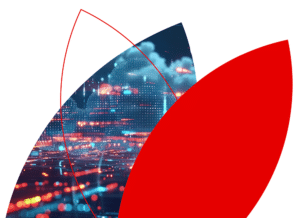How Sustainable is the Cloud?
Sustainability is one of the hottest topics at the board table. Most organisations have a minimum commitment to be carbon neutral by 2050, and many have more ambitious goals.
HPC has a challenging relationship with sustainability, on one hand, it uses a lot of power and space, on the other it is a key tool for scientific and engineering development. The Cloud is marketed as an option for achieving sustainability commitments while still maintaining the performance of an HPC. Before moving an HPC to the Cloud it is important to consider how sustainable the Cloud is.
This blog post looks at the three big Cloud providers (hyperscalers), Azure, AWS, and GCP sustainability goals, their current efforts, and the tools they provide to improve your Cloud deployment’s sustainability.
What are the hyperscalers sustainability goals?

All three hyperscalers have set goals to achieve at least 100% renewable energy usage and to be carbon neutral. Many of the goals of the Cloud provider are set by their parent organisation, Microsoft for Azure, Amazon for AWS and Google for GCP so they are used interchangeably here.
Microsoft has committed to using 100% renewable energy by 2025 and to be carbon-negative by 2030. This means that it will remove more carbon from the atmosphere than it emits. Microsoft also aims to remove all of its historical emissions since its founding in 1975 by 2050.
Amazon has committed to using 100% renewable energy by 2025 and to be carbon neutral by 2040. This means that it will balance its emissions with carbon removals or offsets. Amazon also plans to invest $2 billion through the Climate Pledge Fund, which supports low-carbon technologies and solutions.
 Google has been carbon-neutral since 2007 and has used 100% renewable energy since 2017. Further to this Google has removed all historical emissions as of September 2020. Google also aims to run on 100% carbon-free energy by 2030, which means that it will source renewable energy from the local network for every hour of every day.
Google has been carbon-neutral since 2007 and has used 100% renewable energy since 2017. Further to this Google has removed all historical emissions as of September 2020. Google also aims to run on 100% carbon-free energy by 2030, which means that it will source renewable energy from the local network for every hour of every day.
With these commitments in place, any of the three Cloud providers would make a suitable destination for a sustainable Cloud HPC. The final choice will be driven by your organisation’s timeline on sustainability commitments in addition to technological requirements for your HPC.
What are the hyperscalers doing right now?
While it is important to consider the Cloud vendors’ future commitments to ensure they align with your own, the real fact is that you want to run a cloud HPC today, tomorrow and in the future. So, what are the Cloud vendors doing right now to address sustainability?
Data available from vendors varies dramatically. When considering sustainability, I believe that the more open and accountable an organisation makes itself, the better.
To measure and compare the sustainability performance of the three Cloud providers, we can look at some of the metrics and indicators that they report, such as their power usage effectiveness (PUE), and their renewable energy percentage.
The PUE of a data centre is a measurement of how efficiently the energy entering the premise is used for the IT equipment. Services such as lighting, cooling, and even the coffee machine are seen as ancillary. The calculation for PUE is:
The current average of a data centre in the USA is around 1.8.
Building data centres is expensive and running them can be even more so. With the scale that the hyperscalers operate at even small efficiency gains can mean large savings both financially and in energy usage. This has led to Cloud provider data centres typically being highly optimised and constantly under review for further improvements.
Azure reports a global average PUE of 1.18 for its data centres in 2022. That means that for every unit of power used for IT equipment, 0.18 units are used for cooling and other overheads. Azure does not disclose its renewable energy percentage for its data centres.
AWS does not publish the PUE of its data centres, but it claims that its global infrastructure is 3.6 times more energy efficient than the median American enterprise data centre and up to 5 times more efficient than a European data centre. Amazon reported a renewable energy percentage of 42% for its data centres in 2019, which means that 42% of its electricity consumption came from renewable sources.
 GCP reported a PUE of 1.10 for its data centres in 2019, which means that for every unit of power used for IT equipment, 0.10 units are used for cooling and other overheads. GCP also reports a carbon intensity of 0.1159 tCO e/MWh for its data centres in 2022, which means that for every Megawatt consumed, 0.1159 tonnes of CO2e are emitted. Google releases hourly data on the carbon-free energy percentage for each of its regions, allowing regular review and the potential to move resources for lower carbon energy. In 2022 64% of Google’s energy usage was carbon-free.
GCP reported a PUE of 1.10 for its data centres in 2019, which means that for every unit of power used for IT equipment, 0.10 units are used for cooling and other overheads. GCP also reports a carbon intensity of 0.1159 tCO e/MWh for its data centres in 2022, which means that for every Megawatt consumed, 0.1159 tonnes of CO2e are emitted. Google releases hourly data on the carbon-free energy percentage for each of its regions, allowing regular review and the potential to move resources for lower carbon energy. In 2022 64% of Google’s energy usage was carbon-free.
The hyperscalers all claim to be significantly more efficient, up to 93%, than traditional on-premises data centres.
With the improvements in PUE and their buying power when purchasing energy contracts these claims are reliable. So, unless you are building a brand new highly optimised data centre to house one of the most powerful HPC systems in the world, such as the Energy Systems Integration Facility, the Cloud can help you to reduce your energy consumption and carbon emissions.
How do you check your cloud carbon footprint?
Monitoring your HPC is important, and this includes monitoring carbon emissions. Whether this is for internal reporting or an external audit, the hyperscalers all provide tools to help you monitor your Cloud HPC energy usage.
All three providers have tools for monitoring your carbon emissions based on your cloud usage. Azure has the Emissions Impact Dashboard, AWS has the Customer Carbon Footprint Tool, and GCP has the Carbon Footprint. All of these tools offer a way to both estimate your carbon emissions and compare these to a theoretical on-premises system that did the same amount of computation.
Azure, AWS and GCP all also offer recommendations for optimising compute resources. These typically look at CPU usage and other key stats and then recommend lower power resources if they detect a machine is underutilised.
Using these tools can reduce the burden of reporting and can help you make more informed decisions when it comes to your Cloud usage and how sustainable it is.
So, what is next?

Cloud HPC can be a powerful, flexible and crucial tool for any organisation. The environmental impact of an HPC service whether on-premises or in the Cloud can be significant and requires careful planning at all stages of its life cycle.
Comparing the three big Cloud providers they are all making progress, towards improving sustainable computation. Each provider has different goals, implementation strategies and timeframes so considering your organisation’s commitments at an early stage in a project will help to guide the decision on which vendor is the most appropriate.
Once on the Cloud, the majority of responsibility for creating and maintaining a sustainable platform is placed with the Cloud provider. However, using the tools provided you can monitor and optimise your infrastructure and help out with the effort.
The Cloud can be a powerful tool in the journey to sustainable HPC. It is not the only route, but it can provide a lower barrier to entry than other routes which we will explore in the other blogs in this series.
If you need a comprehensive review of your current HPC environment, Cloud or on-premises, and are looking to understand your environmental impact, then reach out to us at Red Oak Consulting.

James Page
Lead Consultant
Red Oak Consulting
